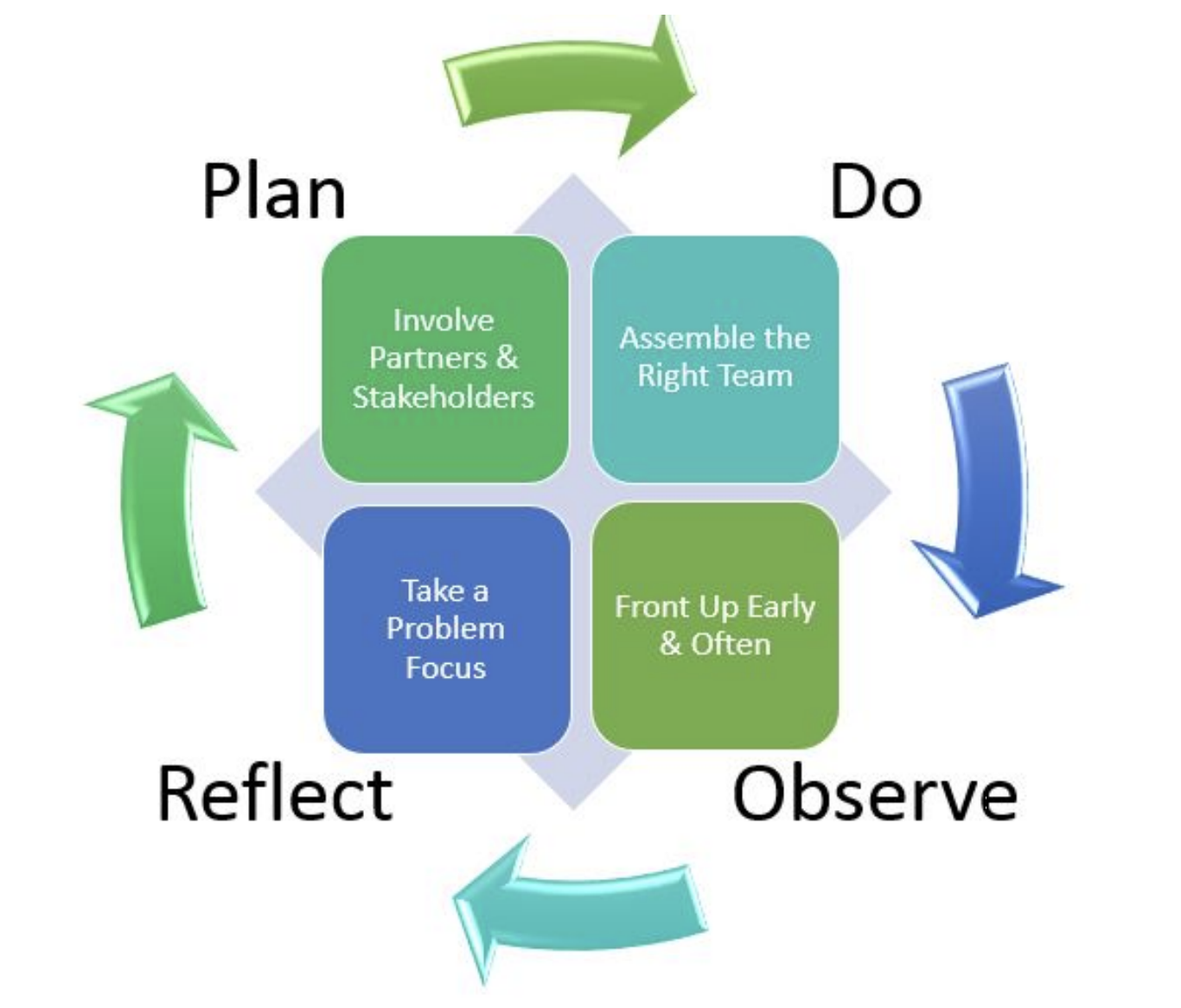Co-innovation is a systemic approach used to facilitate and accelerate the pace of practice change and innovation. It has been used to tackle the more complex challenges and opportunities that agriculture is facing.
In this approach the problem or opportunity is put at the centre of the whole process, rather than the person (often the farmer). In tackling the problem or opportunity, all stakeholders need to be involved and are engaged in evaluating and finding solutions. It uses processes like Action Learning, Action Research, Systems Analysis and Stakeholder Analysis.
This post introduces work from the Primary Innovation Project led by Dr James Turner, a Resource Economist with AgResearch in New Zealand. The project works with a cross discipline team (pastoral, horticulture and forestry), involving eleven industry based organisations and a Community of Practice of forty-four members which form an innovation network.
The experience of this project is that solutions evolve and develop and in doing so build and continue to build trust and a common sense of purpose among participants.

Dr James Turner. Source, Beyond Results, New Zealand
Co-innovation is also referred to as Agricultural Innovation Systems and came out of work in Europe in the early 2000s.
You would use a co-innovation approach when:
- Problems cannot be solved just by changes on farm but changes off farm as well
- Others are to be impacted, not only the farm and farmer
- It has the potential to benefit multiple stakeholders
- There is potential for significant impacts, that are not easily reversible
Innovation Broker – Co-innovation involves natural interactions amongst many different people (stakeholders). An innovation broker is someone who is very good at communicating with and connecting those many different stakeholders, understanding their needs and interests and helping in meeting them. Having someone dedicated to this role, particularly early in the project accelerates engagement and effective interactions. Experience in negotiation helps this role work effectively, particularly where there are potential positive versus negative effects amongst the various stakeholders involved.
The Principles of a Co-innovation Approach:
- Engage and involve partners and stakeholders. Those needed to understand the problem or opportunity and develop solutions. The relationships must be built on mutual respect. Stakeholders will bring different perspectives and provide solutions that can be applied along the value chain.
- Take a problem focus up front to get an early and clear identification of the problem or opportunity and the views of the different stakeholders. A programme logic or problem tree analysis is used by the Primary Innovation team at this stage.
- Assemble and nurture the right team. Make sure they bring a mix of the right technical skills, but also people that bring soft skills in things like negotiation, facilitation and systems thinking (seeing the big picture). Be inclusive in terms of the diversity of the stakeholders. In their project they used a skilled facilitator as a reflexive monitor who worked closely with the project leader to keep things focussed on the principles and the outcomes required.
- Front up early and often. Things don’t need to be perfect to be implemented, things can be continuously improved overtime by engaging with stakeholders frequently in the early stages of projects and seeking feedback and ideas. Gather systematic feedback at this stage from workshops, meetings and extension events and use it for continuous improvement using an Action Learning Cycle approach.
- Plan – Do – Observe – Reflect; build in using the Action Learning Cycle throughout the project. Co-innovation is focussed on action. Learning by doing, taking results and testing them in the real world. It is also important to adapt to changing circumstances, either within or outside the project that present opportunities or issues that need to addressed or taken advantage of as the project and its environment evolves.
These principles are described in more detail by Boyce et al, (2016) Building co-innovation into your research proposal

Source: Beyond Results, AgResearch New Zealand
Monitoring and evaluation, the use of a Programme Logic approach and the collecting of information and data; is important to have happen throughout the life of the project. Having someone dedicated to making this happen is important. Just as it is important to have someone doing the Innovation Broker role.
Content sources and further information
Vereijssen at al, . (2017). Addressing complex challenges using a co-innovation approach: Lessons for five case studies in the New Zealand primary sector. Outlook on Agriculture, 46(2), 108-116.
Rijswijk et al, (2015), . Reflexive monitoring in New Zealand: Evaluation lessons in supporting transformative change. Evaluation Journal of Australasia, 15(4), 38-43.
Botha et al, (2017), . Evaluation learning and accountability in system innovation: Incorporating reflexivity in a logical framework. Outlook on Agriculture, 46(2), 154-160
Boyce et al, (2016), . Building co-innovation into your research proposal.
Turner et al, (2013), . Challenges to effective interaction in the New Zealand agricultural research and extension system: An innovation systems analysis. Extension Farming Systems Journal 9(1): 89-98
Turner et al, (2017) Triggering system innovation in agricultural innovation systems: Initial insights from a community for change in New Zealand. Outlook on Agriculture, 46(2), 125-130
Primary Innovation. www.beyondresults.co.nz
